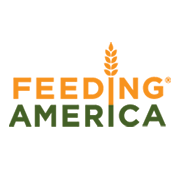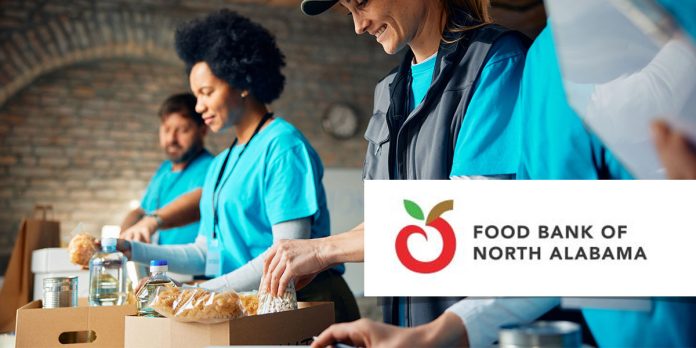HUNTSVILLE – The number of North Alabama families facing food insecurity has continued to increase, according to new numbers released by Feeding America.
 According to Feeding America’s Map the Meal Gap study, which reflects 2023 numbers, the latest available, the number of people who experience food insecurity has risen to 187,180 people – including 44,860 children — in the Food Bank of North Alabama’s coverage area, which includes Colbert, DeKalb, Franklin, Jackson, Lauderdale, Lawrence, Limestone, Madison, Marshall and Morgan counties.
According to Feeding America’s Map the Meal Gap study, which reflects 2023 numbers, the latest available, the number of people who experience food insecurity has risen to 187,180 people – including 44,860 children — in the Food Bank of North Alabama’s coverage area, which includes Colbert, DeKalb, Franklin, Jackson, Lauderdale, Lawrence, Limestone, Madison, Marshall and Morgan counties.
Food Bank of North Alabama CEO Shirley Schofield said while the Food Bank staff is disappointed to see the need for food assistance in the community grow, everyone is ready to work hard to meet the challenge, especially with the help of existing and new partners.
“Our donors, volunteers, partners and public officials place their trust in us to help ensure our neighbors have the food they need to be successful, and we take that responsibility seriously,” Schofield said. “While we hate to see the number of people facing food insecurity increase in our community, we know that Alabamians are incredibly generous and will be ready lend us their support to ensure all have access to nutritious meals.”
The Feeding America study also found that in both Madison and Limestone counties more than 60 percent of residents who are food insecure are living above the SNAP threshold, meaning their income is too high to receive any government food assistance but their income isn’t high enough for them to consistently keep food on the table.
Map the Meal Gap, now in its 15th year, is the only study that provides local-level estimates of food insecurity and food costs for every county and congressional district. The study builds upon USDA’s report of national and state data.
“This year’s study shows we still have work to do in creating a future where every child has access to the meals they need to learn, grow, play and thrive,” said Melanie Hall, chief research & innovation officer for Feeding America. “For children, access to enough nutritious food is a necessity, as hunger can limit their potential and well-being. As school summer breaks approach, we can all play a role in creating a summer where every child is nourished, whether it is volunteering or donating to your local food bank or advocating for policies that will support our nation’s families.”
The Food Bank of North Alabama is the primary source of food for over 230 local organizations, including church food pantries, domestic violence shelters and homeless shelters. In 2024, the Food Bank distributed over 15.1 million pounds of food, equivalent to over 12.5 million meals.
Much of the food distributed by the Food Bank comes through its grocery store rescue program, where over 100 grocery stores in North Alabama make regular donations. The Food Bank rescued over 6.2 million pounds of food in 2024 through this program.
Another 5.3 million pounds of food came from federal programs in 2024. However, due to cuts in federal programs the Food Bank is set to receive approximately 1 million fewer pounds of food this year, leading to a drop in food available to its network.
“We’ve been in this community for 41 years, and we will be here serving people for as long as we are needed; our model is time-tested and highly efficient,” Schofield said. “These cuts occurring as we’re seeing more and more people seeking food assistance is a challenge for sure but one that North Alabama can overcome when we all work together.”
Don’t miss out! Subscribe to our email newsletter to have all our smart stories delivered to your inbox.



